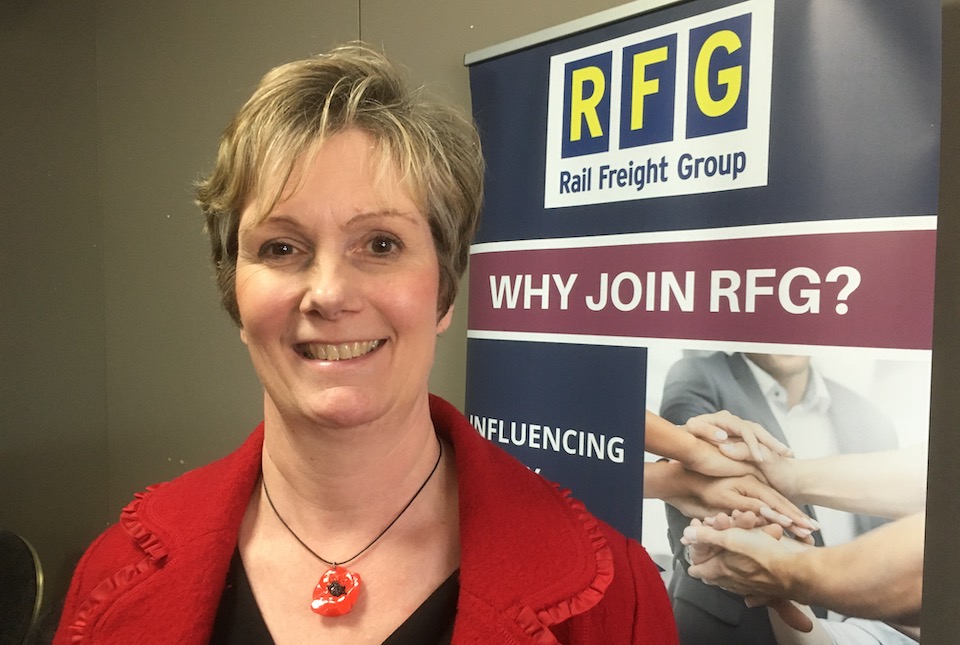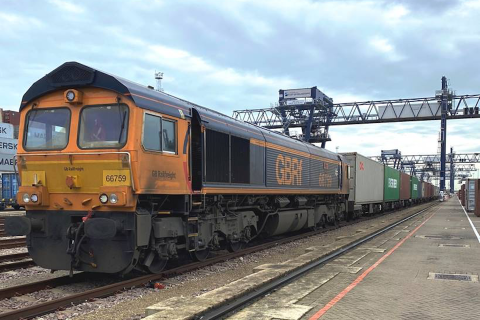UK rail freight offers cautious welcome back to passenger sector

With a new timetable introduced today, much of the UK passenger network is now operating at almost pre-pandemic levels of service. While passenger numbers are still down, the network is once again filling up. What does that mean for freight operators who have carried on throughout, delivering vital supplies and keeping economic activity rolling?
From Monday 7 September, there was a more familiar feel to the major passenger terminals around the UK. At least, that was the view for signallers, as services stepped up to close to pre-pandemic levels. Scotland has led the way, due to an earlier start to the school semester, but it was in the more populous England and Wales that today marked the latest planned timetable introduction, designed to build back from the absolute halt at the beginning of the nationwide lockdown in March.
Rail freight acknowledged for carrying on throughout pandemic
While there are fewer passengers travelling, capacity on trains remains significantly reduced. Consequently, an almost full timetable is required to make it possible for essential journeys to be completed.
In contrast, the rail freight sector has been running at and above capacity throughout the coronavirus crisis. The sector continues to operate, delivering goods around the country. However, the almost deserted network of March and April has been replaced by an almost normal pattern of service across the entire UK, and freight is learning to live with significant passenger traffic once again. Today marks the latest ramp-up in that relationship.
Welcome back from Rail Freight Group
“It is great to see the passenger railway coming back to a full timetable and stepping forward to play its part in the recovery everyone wants to see”, said Maggie Simpson, director-general of the industry representative Rail Freight Group. Her members have been highly praised as the hidden key workers, keeping Britain supplied through the height of the pandemic and keeping industry moving.

It may even have been viewed with some relief that services were back to normal, with flows awaiting access at junctions. Even at remote Georgemas Junction, in the far north of Scotland, the experimental timber flows – a new service inaugurated during the pandemic – awaited night departure last week until a late-running passenger service cleared the single track line. Not a problem that has been a feature of freight operations lately, with some flows running up to two hours early across England and Scotland.
Passenger operators aware of their challenges
For the passenger operators consortium, the Rail Delivery Group, Jacqueline Starr, their chief operating officer, said every service was important to everyone using it. “We want people to feel confident taking the train as they get back to school and adding services back into the timetable where they’re most needed will support that. Rail companies are doing everything they can to ensure people start the term with a smooth journey.”
While freight operators have become accustomed to taking such measures as social distancing, it is admittedly more challenging for passenger operators, who have much greater public health concerns to address. That can impact adversely on operations. “Some train times will change so we are asking people to check before they travel and plan their journeys for quieter times if possible”, added Starr. Perhaps that is not an option open to freight operators, for whom paths are limited and customers expect timely delivery.
Bottlenecks filling up and capacity issues remain
Despite competition for paths, freight train operations are expected to maintain the good performance experienced so far this year. However, with traffic rising, and the network facing some familiar bottlenecks, there are some concerns that previous problems will re-emerge. “The sector needs to make sure freight can still run efficiently and productively while allowing further work to enhance the capacity needed for growth”, noted Simpson from RFG. “Rail freight has a key role to play in the economic recovery of the nation and we would urge Network Rail to maintain its growing support for freight.”

The demand for rail freight continues to grow, even in these most challenging times. Intermodal trains from South Coast ports, and aggregates flows from quarries in the North and West, have all been added. The challenges faced for capacity and paths on the network have not diminished. With the attractiveness of the rail freight sector continuing to grow, the welcome offered to passenger traffic is, for now, at least observing all the caution of social distancing.
Main image: Freightliner and Great Western face off at Bristol (Chris McKenna)
You just read one of our premium articles free of charge
Want full access? Take advantage of our exclusive offer




